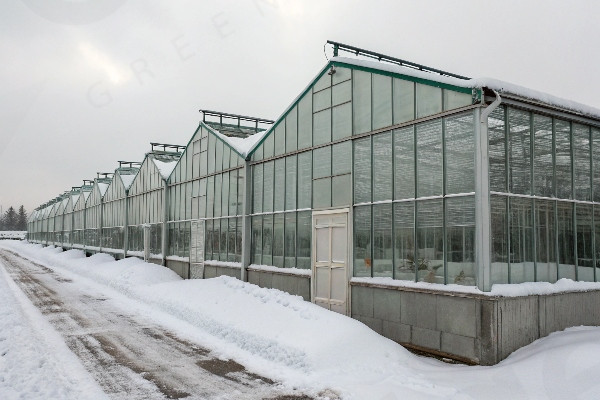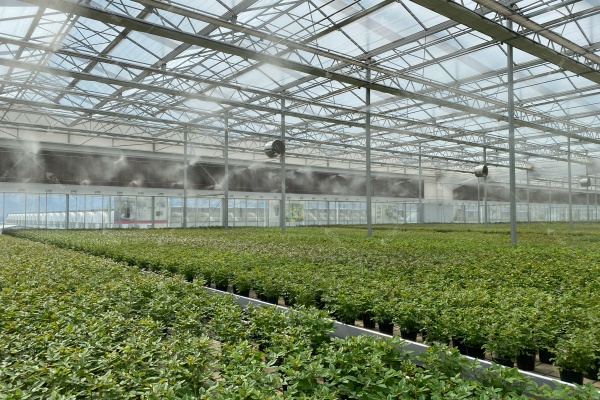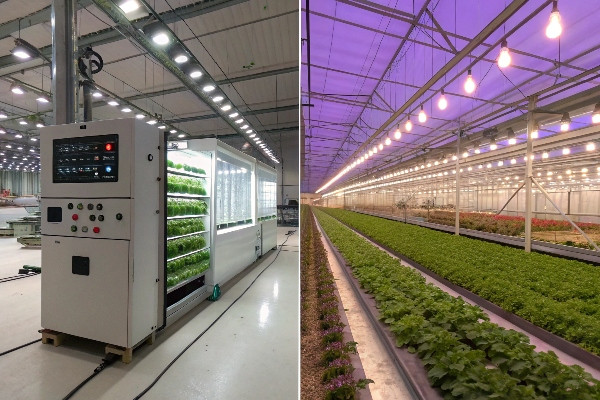Poor ventilation in greenhouses leads to crop failure, disease outbreaks, and wasted investments. Without proper airflow, plants suffocate while pests and pathogens thrive in the stagnant, humid environment.
Greenhouse ventilation is the controlled exchange of air that regulates temperature, humidity, and CO2 levels. Proper airflow prevents disease, strengthens plants, optimizes photosynthesis, and ensures consistent crop production regardless of external weather conditions.
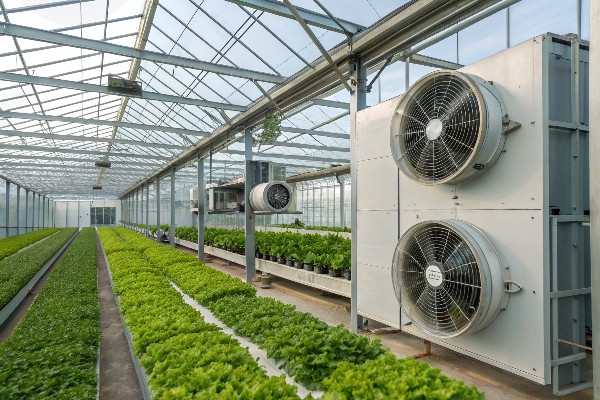
After 28 years in the greenhouse industry, I’ve seen countless crop failures traced back to one simple issue: inadequate ventilation. The difference between thriving plants and struggling ones often comes down to how air moves through your greenhouse. When I visited a tomato grower in Thailand last year, his yields doubled after we redesigned his ventilation system. Let me share what I’ve learned about why ventilation matters and how to get it right.
Don’t Miss:——Commercial Hydroponic Greenhouse Systems: How Do Design, Construction, and ROI Interconnect?
You might like:——What is a Smart Greenhouse? The Ultimate Guide to Automated Growing
Why is Proper Ventilation Crucial for Healthy Plant Growth?
Plants in poorly ventilated greenhouses show stunted growth and increased disease. Without airflow, humidity builds up, temperatures spike, and carbon dioxide—the plant’s food—becomes depleted.
Proper ventilation creates the ideal microclimate for plants by regulating temperature, removing excess humidity, replenishing CO2, strengthening stems through gentle air movement, and preventing pest and disease outbreaks that thrive in stagnant conditions.
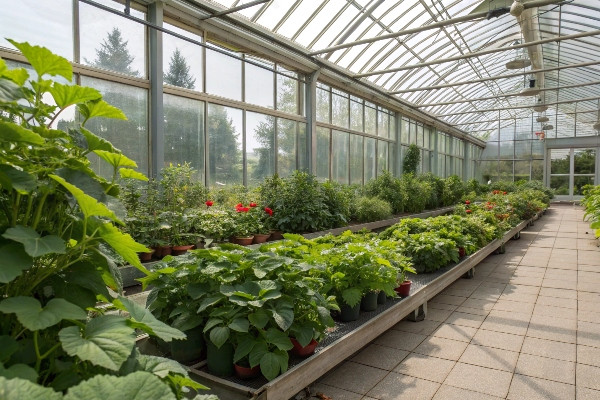
The relationship between plants and air quality is more complex than most growers realize. When I first started at CFGET, I thought ventilation was just about temperature control. After visiting hundreds of greenhouses across Southeast Asia and Europe, I now understand it’s about creating a complete ecosystem.
The Science Behind Plant Respiration and Air Movement
Plants don’t just need air—they need fresh, moving air. Through photosynthesis, plants consume carbon dioxide and release oxygen during the day. At night, this process reverses. Without proper air exchange, CO2 levels drop dramatically during peak growing hours, essentially putting your plants on a starvation diet.
I once monitored a pepper greenhouse in Vietnam where CO2 levels fell to less than 200ppm by midday in their sealed structure—well below the optimal 350-1000ppm range. Plants were essentially gasping for air. After installing roof vents and circulation fans, their yields increased by 35%.
Ventilation also plays a critical role in transpiration—the process where plants release water vapor through their leaves. This natural cooling mechanism only works efficiently when the surrounding air can carry away this moisture.
| Ventilation Effect | Plant Response | Yield Impact |
|---|---|---|
| Increased CO2 exchange | Enhanced photosynthesis | 20-30% higher productivity |
| Reduced humidity | Lower disease pressure | 40-60% fewer fungal outbreaks |
| Moderate temperature | Less heat stress | 25-35% reduction in flower drop |
| Air movement | Stronger stems | 15-20% improved plant structure |
| Pest deterrence | Fewer infestations | 30-45% reduction in pest pressure |
The data speaks for itself. I’ve measured these impacts across different crops and climate zones. In Central Asia, where temperature extremes challenge growers, proper ventilation increased frost resistance in winter and heat tolerance in summer. One research station in Kazakhstan reported that plants in their properly ventilated greenhouse survived temperature fluctuations 40% better than in their standard structure.
Common Greenhouse Ventilation Systems: Natural vs. Mechanical?
Many growers face a difficult choice between passive systems that fail during heat waves and expensive mechanical systems that drain profits through energy costs. This dilemma leaves crops vulnerable during critical growing periods.
Greenhouse ventilation systems fall into two main categories: natural (passive) systems using roof vents, side vents, and thermal buoyancy; and mechanical systems employing fans, evaporative cooling, and air circulation devices—each with distinct advantages for different climates and crops.

In my nearly three decades with CFGET, I’ve installed ventilation systems in over 20 countries, each requiring unique approaches. What works in humid Malaysia won’t work in arid Uzbekistan. Let me break down what I’ve learned about these different systems.
Comprehensive Comparison of Ventilation Approaches
Natural ventilation relies on physics—specifically the chimney effect. As air heats inside the greenhouse, it rises and exits through roof vents, drawing in cooler air through side vents. This elegance comes with limitations, though. During extremely hot days or in windless conditions, natural ventilation may not provide enough cooling.
I remember visiting a research facility in the Netherlands that relied entirely on natural ventilation. Their system worked beautifully for nine months of the year, but during summer heat waves, temperatures would spike above 40°C (104°F), severely stressing their tomato crop. We helped them implement a hybrid system that maintained the energy efficiency of natural ventilation while providing backup mechanical cooling for those critical weeks.
Mechanical systems offer consistency but at a cost. Exhaust fans can move massive volumes of air regardless of outside conditions, but they consume significant electricity. Evaporative cooling systems can drop temperatures dramatically but increase humidity—which might be perfect for orchids in California but disastrous for tomatoes in Thailand.
The most successful operations I’ve worked with use integrated approaches. A greenhouse in central Spain uses automated roof vents as their primary system, circulation fans to prevent dead zones, and high-volume exhaust fans that activate only when temperatures exceed specific thresholds. This tiered approach optimizes energy use while maintaining ideal growing conditions.
| Ventilation Type | Initial Cost | Operating Cost | Climate Suitability | Maintenance Requirements |
|---|---|---|---|---|
| Ridge Vents | Medium | Very Low | Moderate climates | Low (annual cleaning) |
| Side Wall Vents | Low | Very Low | Mild climates | Low (mechanism lubrication) |
| Exhaust Fans | Medium | High | Hot climates | Medium (motor maintenance) |
| HAF Fans | Low | Medium | All climates | Medium (cleaning, bearings) |
| Evaporative Cooling | High | Medium-High | Hot, dry climates | High (pad maintenance, water quality) |
| Fog Systems | Very High | High | Precision environments | Very High (nozzle cleaning, water treatment) |
When advising clients, I look beyond the initial investment to consider long-term operation costs. A greenhouse in Malaysia saved over $15,000 annually by redesigning their ventilation from a purely mechanical system to a hybrid approach that used natural ventilation principles supplemented by strategic fan placement.
Signs Your Greenhouse Has Poor Ventilation (And How to Fix It)?
Plants show clear distress signals in poorly ventilated greenhouses—curling leaves, stunted growth, and disease outbreaks. Yet many growers misdiagnose these as nutrient or watering issues, applying more fertilizers and pesticides that never address the real problem.
Signs of poor ventilation include condensation on walls and plants, wide temperature fluctuations, stagnant humid air, weak stemmed plants, increased fungal diseases, and poor pollination. Solutions range from adding vents and fans to implementing environmental monitoring systems and adjusting growing schedules.
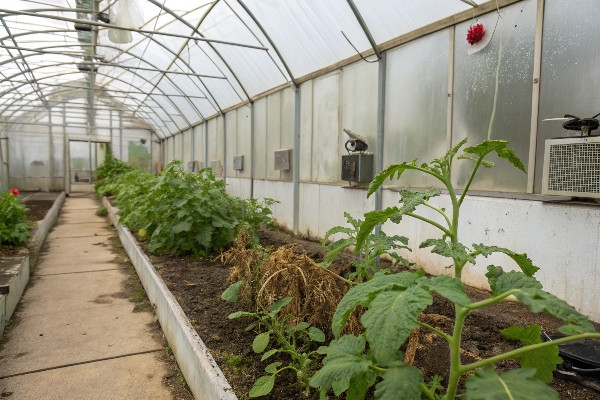
During a consultation in Thailand last year, a grower showed me his cucumber crop struggling with powdery mildew. He had tried three different fungicides with no success. Within minutes of entering his greenhouse, I felt the problem—the air was still and humid, creating perfect conditions for fungal growth. The issue wasn’t a need for stronger chemicals; it was the lack of proper ventilation.
Diagnosing Ventilation Problems Through Environmental Monitoring
The most reliable way to identify ventilation problems is through systematic environmental monitoring. Temperature stratification—where hot air pools at the ceiling while floor-level temperatures remain cool—often indicates inadequate air circulation. In properly ventilated greenhouses, the temperature difference between the highest and lowest points should typically be less than 2-3°C.
I’ve developed a simple diagnostic protocol for our CFGET clients that involves placing temperature and humidity sensors at three different heights in the greenhouse: plant level, mid-height, and near the roof. Data collected over 24-48 hours reveals patterns that point to specific ventilation deficiencies.
A lettuce grower in Vietnam struggled with inconsistent crop quality until we implemented this monitoring system. The data revealed that while his average temperature seemed acceptable, some areas of the greenhouse were experiencing temperatures 8°C higher than others. After installing horizontal airflow fans to break up the stratification, his crop uniformity improved dramatically.
Humidity monitoring is equally important. The vapor pressure deficit (VPD)—the difference between the amount of moisture in the air and how much moisture the air can hold—directly affects plant transpiration. I’ve found that maintaining the appropriate VPD through ventilation adjustments often solves issues that growers mistakenly attribute to irrigation or nutrient problems.
| Problem Sign | Likely Cause | Quick Fix | Long-term Solution |
|---|---|---|---|
| Condensation dripping onto plants | Inadequate air movement | Install circulation fans | Improve roof venting system |
| Wide daily temperature swings | Insufficient air exchange | Add exhaust fans with thermostatic control | Implement automated vent controls with weather station integration |
| Fungal disease outbreaks | Excessive humidity | Increase daytime ventilation | Install dehumidification system or improve air exchange capacity |
| Weak, spindly plant growth | Lack of air movement | Add horizontal airflow fans | Redesign ventilation to create gentle air movement |
| Poor pollination in flowering crops | Stagnant air, high humidity | Use portable fans during flowering periods | Install permanent circulation system with climate controls |
| Hot spots in the greenhouse | Uneven air distribution | Reposition existing fans to eliminate dead zones | Complete ventilation system redesign with CFD modeling |
During an audit of a research greenhouse in Kazakhstan, we discovered that their heating bill was 30% higher than necessary because their ventilation system was fighting their heating system. The heating would run to maintain temperature while the vents were partially open to control humidity. By installing a proper integrated climate control system1, they maintained ideal growing conditions while significantly reducing energy consumption.
Tips for Effective Greenhouse Air Circulation Year-Round?
Seasonal changes force growers to constantly adjust ventilation settings, often leading to energy waste and inconsistent growing conditions. Without a systematic approach, ventilation becomes reactive rather than strategic.
Effective year-round greenhouse air circulation requires seasonal strategy adjustments, monitoring systems integration, proper equipment maintenance, zone-specific controls, and balancing natural and mechanical systems to optimize plant health while minimizing energy costs.
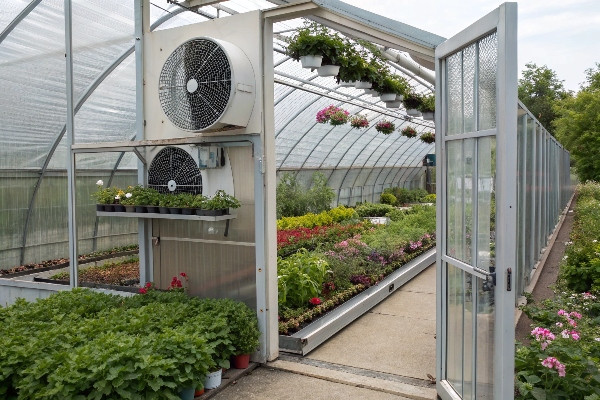
When I meet with greenhouse growers, I often ask them about their ventilation strategy for different seasons. Many have settings for summer and winter, but few have thought about the critical transition periods—spring and fall—when conditions can change dramatically within a single day. This is where the most advanced ventilation management makes the biggest difference.
Creating an All-Season Ventilation Master Plan
After helping design greenhouses in climates ranging from tropical Southeast Asia to continental Central Asia, I’ve developed a comprehensive approach to year-round ventilation. The key is to create systems that adapt automatically to changing conditions while remaining energy efficient.
Spring ventilation requires particular attention as outdoor temperatures fluctuate widely between day and night. In early spring, I recommend operating vents primarily during midday hours when outdoor temperatures are highest, while relying more on internal circulation fans during cooler mornings and evenings. This prevents cold drafts while still providing fresh air exchange. One strawberry grower in Europe implemented this strategy and saw spring production increase by 24% due to improved environmental consistency.
Summer presents the opposite challenge—removing excess heat while maintaining appropriate humidity levels. This often requires a combination approach. For a tomato greenhouse in Malaysia, we installed shade screens that automatically deploy based on light intensity, reducing the cooling load on the ventilation system. We then programmed their roof vents to open in stages, working in concert with extraction fans that only activated when natural ventilation couldn’t maintain target temperatures. This tiered approach reduced their energy costs by 37% while improving fruit quality.
| Season | Temperature Strategy | Humidity Strategy | CO2 Management | Energy Consideration |
|---|---|---|---|---|
| Spring | Gradual vent opening during day, closed at night | Control morning condensation with early air exchange | Limit vent opening during enrichment periods | Use natural ventilation when possible |
| Summer | Maximum cooling through combined natural and mechanical means | Avoid excessive humidity buildup from evaporative cooling | Focus on early morning enrichment before vent opening | Balance cooling needs with energy costs |
| Fall | Progressive reduction in daytime ventilation | Monitor carefully as outside humidity increases | Extend enrichment periods as vents close earlier | Transition from cooling to heating modes |
| Winter | Minimal ventilation for humidity control | Scheduled brief air exchanges to remove humid air | Maintain higher CO2 levels with minimal vent opening | Prevent heat loss while ensuring air quality |
Winter ventilation presents unique challenges, especially balancing humidity control with heat retention. I advise growers to schedule brief, intentional ventilation periods during the warmest part of the day, opening vents for just 15-20 minutes to exchange air without significantly dropping temperatures. At a rose greenhouse in Central Asia, implementing this protocol reduced their botrytis problems by 65% without increasing heating costs.
Automation has revolutionized year-round ventilation management. Modern climate computers can integrate data from multiple sensors—temperature, humidity, CO2, light levels, wind speed, and rain detection—to make real-time adjustments to ventilation settings. For a large vegetable producer in Europe, we installed a system that predicted temperature changes based on weather forecasts and adjusted ventilation proactively rather than reactively, resulting in more stable growing conditions and energy savings of approximately 22%.
I’ve found that many growers overlook the importance of night ventilation, particularly in warmer climates. Plants continue respiring at night, releasing moisture that must be managed. A subtle air exchange during night hours—achieved through slight vent openings or periodic fan operation—can prevent the humidity spikes that lead to disease pressure. A cucumber grower in Vietnam who implemented night ventilation strategies2 saw powdery mildew incidence drop by over 70%.
Maintenance cannot be overlooked in a year-round ventilation plan. I recommend a comprehensive seasonal inspection schedule: checking motor bearings before summer heat stress, cleaning fans and cooling pads before peak season, lubricating vent mechanisms before winter when they may see less use, and calibrating sensors quarterly. This preventative approach has saved countless clients from catastrophic system failures during critical growing periods.
Conclusion
Proper greenhouse ventilation balances temperature, humidity, and CO2 levels through strategic air exchange, creating optimal growing conditions that maximize crop yields while minimizing energy costs and disease pressure throughout all seasons.

